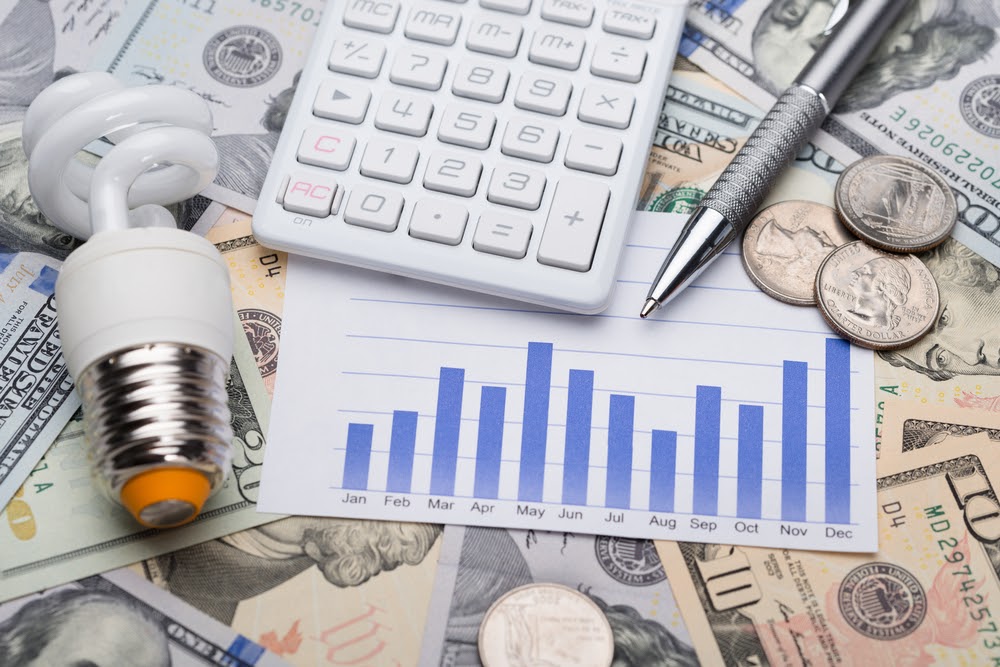Electric Bill Estimator: How Much Will Your Electric Bill Be?
Estimating your monthly household expenses is an important part of staying in control of your finances. It’s easy to determine how much your monthly mortgage or car payment will be since these are fixed expenses. But estimating how much your electricity will cost every month is far more difficult. Here’s what you need to know to become an expert electric bill estimator:
How to Calculate Your Monthly Electric Bill
There are several strategies you can use to estimate how much you will need to spend on electricity every month, including:
- Using Online Estimation Tools
- Calculating Electricity Use By Appliance
- Asking For Averages
Using Online Estimation Tools
There are a number of tools available online that will help you estimate your monthly electricity bill. In fact, most electric companies have electric bill estimators on their websites.
To use an electric bill estimator, simply enter some basic information, including the size of your home, your zip code, and the type of heating/cooling system in your home. Then, the tool will provide you with a rough estimate of how much your electricity will cost every month.
This tool is helpful if you are moving and want to get a general idea of how much your electric bill will be in your new home.
However, these tools will not always produce accurate estimates since they fail to consider your lifestyle when calculating the cost of electricity. For example, if you tend to leave the air conditioner running all day, you will spend more on electricity than someone who turns it off at night.

Calculating Electricity Cost By Appliance
Another way to estimate your electric bill is to calculate the cost of electricity for each major appliance in your home. To calculate the cost by appliance, you will need to know:
- The appliance’s wattage, which is found on a label or metal plate on the appliance.
- The number of hours you use the appliance per day, on average.
- How much your utility provider charges per kilowatt-hour (kWh), which you can determine by contacting the company or looking at your electric bill.
Once you have this information, follow these steps to calculate the cost of powering each major appliance in your home:
- Multiple the wattage for the appliance by the average number of hours the appliance is used per day.
- Divide this number by 1000.
- Multiple this number by the cost per kWh.
For example, say you have a 400 watt TV that you watch for an average of 3 hours per day. Your utility provider charges the national average, which is $0.13 per kWh.
To estimate the cost of electricity for this TV, start by multiplying 400 by 3, which equals 1200. Then, divide this number by 1000, which equals 1.2. Finally, multiple this by the cost per kWh of $0.13, which equals approximately $0.16.
This means it costs about $0.16 per day to use your TV, or $4.80 per month to use your TV for an average of 3 hours per day.
Asking For Averages
If you are moving to a new area or into a new home, you may not know how much you should expect to pay every month for electricity. In this case, it’s wise to contact either your real estate agent or the local utility provider.
Either one of these parties should be able to provide you with more information regarding the average electric bill for a home of your size.
How to Lower Your Electric Bill
There’s no need to panic if your electric bill estimates are higher than you expected. Fortunately, there are plenty of simple ways to save money by lowering your electric bill. Follow these tips:
- Reduce your electricity usage during peak hours. Some utility providers charge higher rates during the hours when electricity is in high demand. Contact your provider to find out when the peak hours are so you know when to avoid using excessive electricity.
- Install a programmable thermostat that will automatically turn your heating and cooling system off during certain hours, such as when you are at work.
- Clean your air conditioner’s air filters and the outside compressor on a regular basis to ensure the system can run as efficiently as possible.
- Replace traditional light bulbs with CFL or LED bulbs, which use less energy and last longer.
- Use the “power save” mode on your refrigerator, computer, TV, and other appliances.
- Plug electronic devices into a power strip instead of directly into the wall. Then, turn the power strip off when the devices are not in use to ensure they don’t continue to consume energy even when they are turned off.
Whether you are moving to a new home or simply trying to manage your household budget, these tips can help you estimate your monthly expenses and make changes that will lower your electric bills.


